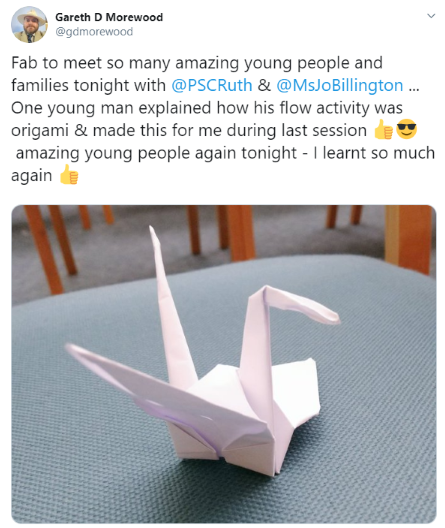With work-related stress on the rise, school staff need to be thinking about putting themselves first. Gareth D Morewood looks at ways of supporting stress to directly improve wellbeing.

The recently published Teacher Wellbeing Index highlights disproportionately high levels of stress amongst teachers, impeding their ability to effectively work with children and young people.
The interaction in the classroom of a stressed, overwhelmed and tired teacher will be different to that of a teacher with a strong sense of professional autonomy, self-efficacy and balance between personal and professional life.
After delivering several training sessions with families, professionals and young people, I have become acutely aware of the need for us to think more deeply about putting ourselves first. We can't simply rely on others to support our stress – we need to take control of elements ourselves in order to directly improve our own wellbeing.
Almost a decade ago I wrote about the importance of reflective practice as part of supporting different professional development skills.
Put simply, reflective practice means to think about or reflect on what you have done, what happened as a result and what you would do differently next time. This concept can also be used in regards to thinking about our own wellbeing and stress.
Gibb's model of reflective practice
An important characteristic of reflective practice rather than reflection is the fact that it is captured and expressed in some form – usually written, spoken or recorded on a systematic basis.
This is because learning comes not only from the ‘in the head’ reflection but from the process of representing the reflection itself. When the process of representation becomes a habitual activity, patterns and connections become visible.
Using Gibb’s model of reflective practice (1998) allows us to:
Another core element of looking after ourselves is establishing a stress and wellbeing framework. Do we:
We all know how easy it is to get tied up during a busy school day; I often hear of teachers not having time for lunch or even a quick drink. It may be worth setting alarms or reminders to remind us to drink or bringing in a specific water bottle that we aim to finish each day.
Imposing a ‘one-size fits all’ approach can add to stress and is simply counterintuitive
Eating a proper lunch with students can be a simple way of providing appropriate supervision and support and ensuring you maintain regular meals during a busy day. Alternatively, staff who have time to sit in a quiet space during lunch can engage in calm reflection.
I have talked a lot about flow activities and written previously about the importance of flow in supporting ourselves.
Achieving a sense of flow is a key component of wellbeing and good stress management. Flow experiences require us to be completely immersed in an activity, such as reading a book or playing a musical instrument. (Nakamura and Csikszentmihalyi, 2009).
Flow can also happen in social situations, for instance, talking to a friend. For an example of this, see Morewood & Drews (2013).

One young person I met explained how his flow activity was origami
It is important that we actively identify our flow activities and ensure they are planned and part of our daily or weekly schedule. The key for me has been ensuring flow activities are pro-actively planned and not used purely reactively when stressed.
I enjoy visiting the local cinema every Sunday (those who know me know that I have an unlimited viewing card!) My routine allows me to leave my house so I arrive just before the scheduled start time of the film, find my allocated seat, switch my phone off and settle into a calm, interrupted space.
Any setting or culture should allow for personal choice
For me this routine allows a real sense of abandonment and escape.
Whatever your flow activities, take time to identify them and plan time for them. Acknowledging the importance of this has been vital for me and many others I have worked with.
During some of my recent training sessions I've heard of settings imposing wellbeing activities on staff, such as compulsory yoga after school! To improve wellbeing and reduce stress, any setting or culture should allow for personal choice; one of which is to go home and do your own thing.
Our responses to stress and wellbeing are personal, therefore the support and routines to help should also allow for a personalised response. Imposing a ‘one-size fits all’ approach can add to stress and is simply counterintuitive with our understanding of human responses to stress.
Whatever your setting or circumstance, at this time of year it is even more vital than even to think about yourself and how to try and maintain a positive stress and wellbeing balance.
References and further reading